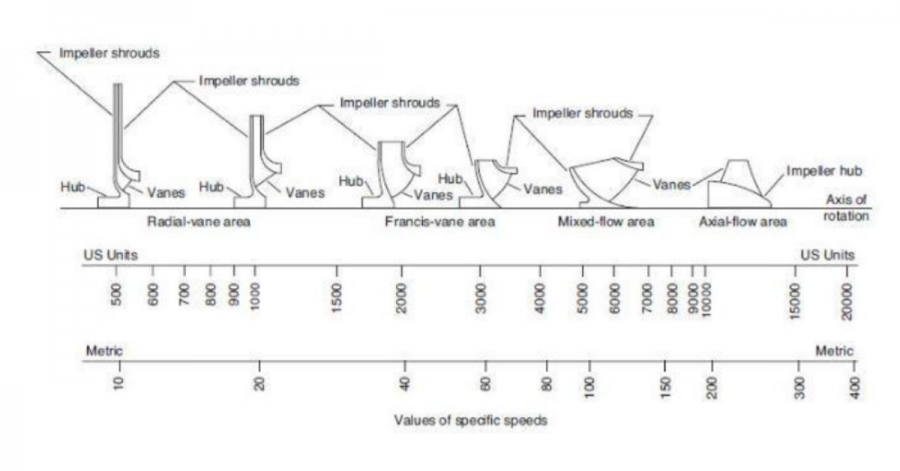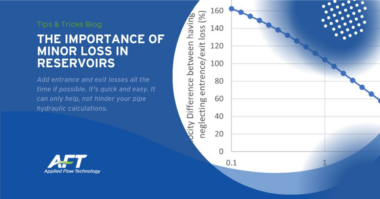Theory bites is a collection of basic hydraulic theory and will touch upon pump design and other areas of pump industry knowledge.
Specific speed is defined as “the speed of an ideal pump geometrically similar to the actual pump, which when running at this speed will raise a unit of volume, in a unit of time through a unit of head”.
Specific speed Ns, is used to characterize turbomachinery speed: It is an index used to predict desired pump performance. It predicts the general shape of a pumps impeller.
It is this impeller’s “shape” that predicts its flow and head characteristics so that the designer can then select a pump most appropriate for a particular application.
Once the desired specific speed is known, basic dimensions of the unit’s components can be easily calculated.
Pumps are traditionally divided into three types: radial flow, mixed flow, and axial flow.
When you look at the chart you can see there is a gradual change from the radial flow impeller, which develops pressure principally by the action of centrifugal force, to the axial flow impeller, which develops most of its head by the propelling or lifting action of the vanes on the liquid.
Post your questions in the comments section below!





The pure definition of specific speed, as provided here, is theoretically correct. But in the abstract it is difficult to relate to. In actual practice, pump engineers and applications professionals use and “think with” specific speed values, based on actual pumps, when communicating about performance, hydraulic geometry and the type of pump and its arrangement under consideration. Specific speed is the key pump performance parameter.
But additional commentary on this is in order. Specific speed is a dimensionless numerical value. Except: customary usage practices have resulted in at least 5 sets of specific speed values, depending on the units used, only one of which is dimensionless. One could ask, “Why don’t we all just adopt dimensionless specific speed?” Well, all one has to do is look at the situation with US Customary Units and Metric. For example, let us not forget that an important benefit of Metric is its clearly defined unit of force and weight, the Newton, even though customary practice in commerce continues with the Kilogram as the Metric unit of weight. And personally, I’ll never give up the unit of Horsepower. Customs are not easily changed!
Maria Elena, thank you for posting another interesting article.
Very good information in a brief article !
can, or how to relate the Specific Speed to the electrical power consumption of a pump.
Yes Syed. Pump Specific Speed also defines HQ /PQ Slopes and Shapes.. So depending on the Operating Range you are analysing and how the HP/KW of the motor are sized, going for eg Mixed Flow or Radial Flow are different options
A good relation is the Johann Friedrich Gülich, Centrifugal Pumps Book reference (In fact Figure 4.11)
Hope this helps
Thanks Randall for the comments… Always nice sharing knowledge and learning from your post!
The Operating Ranges ones… are a MUST to all the Pump Engineers understanding how to size a pump in a project